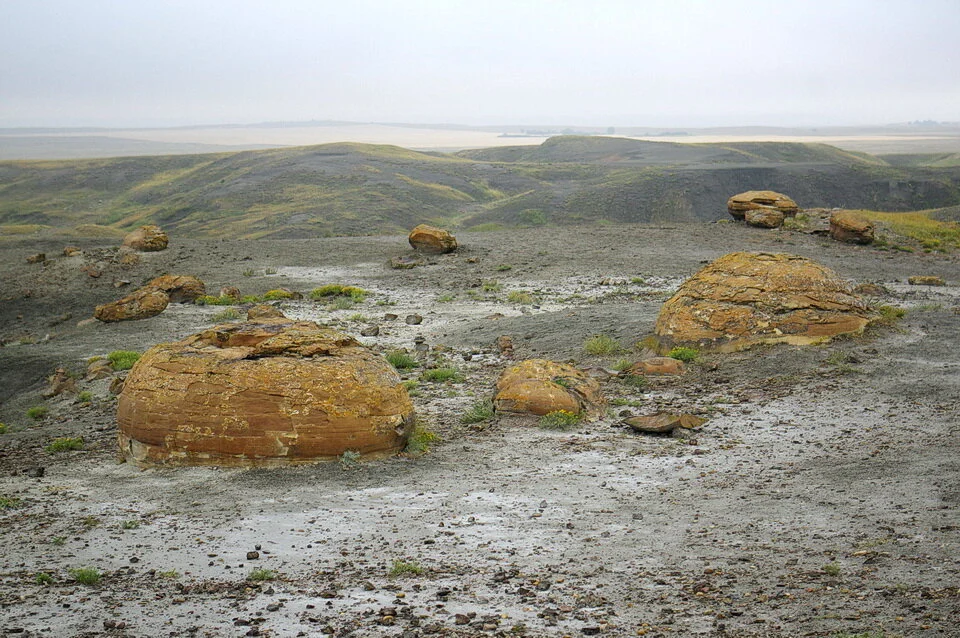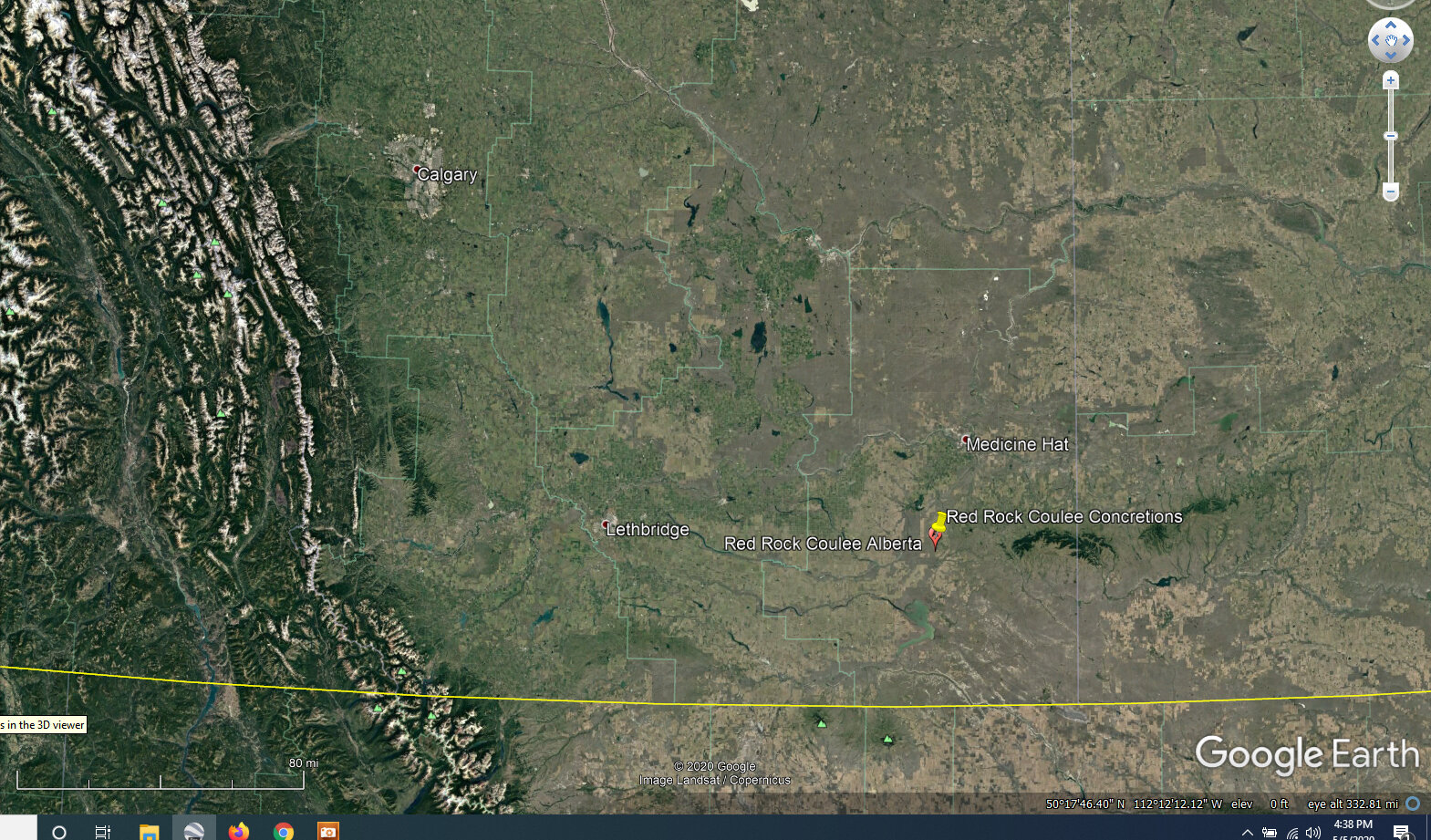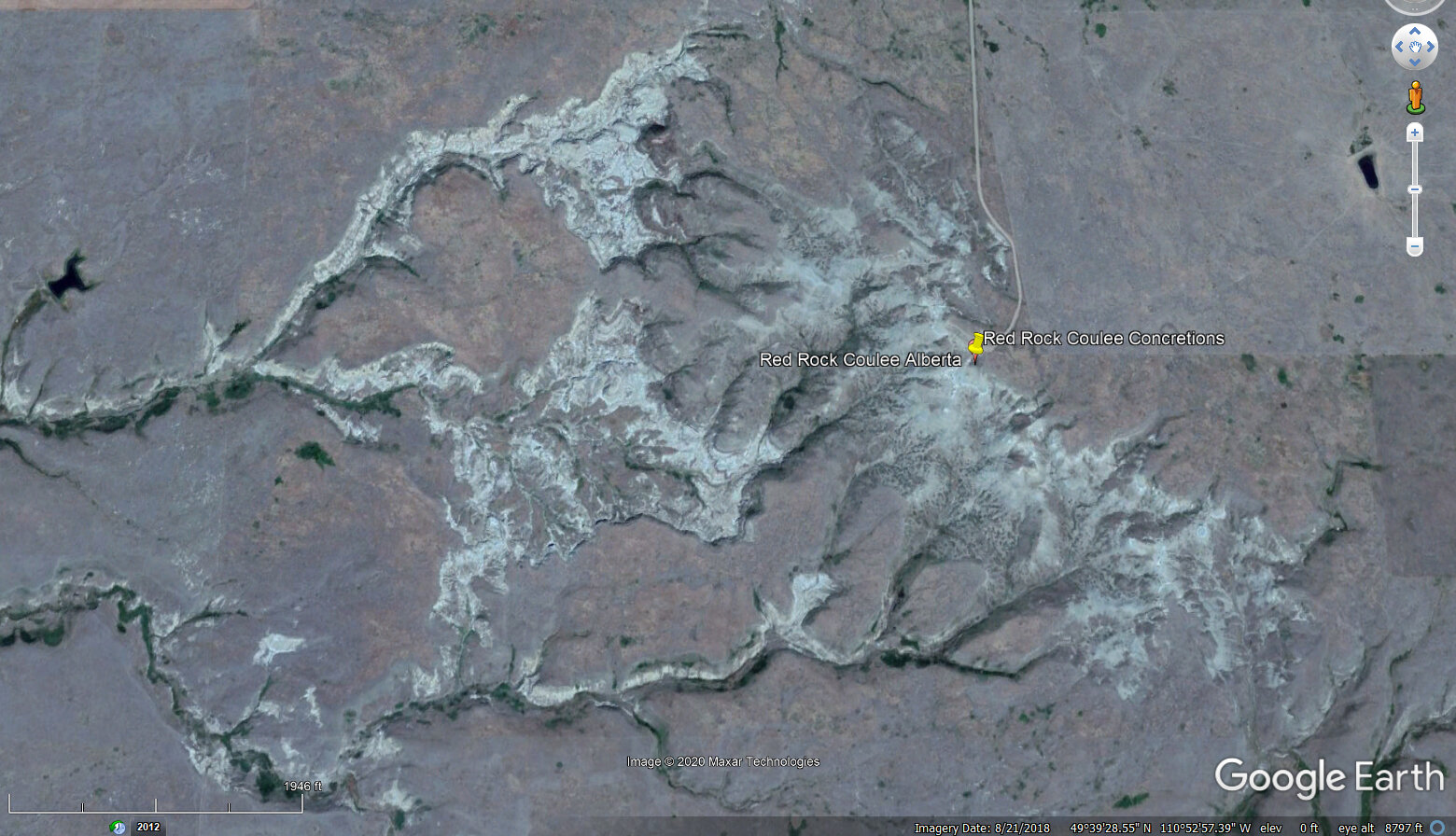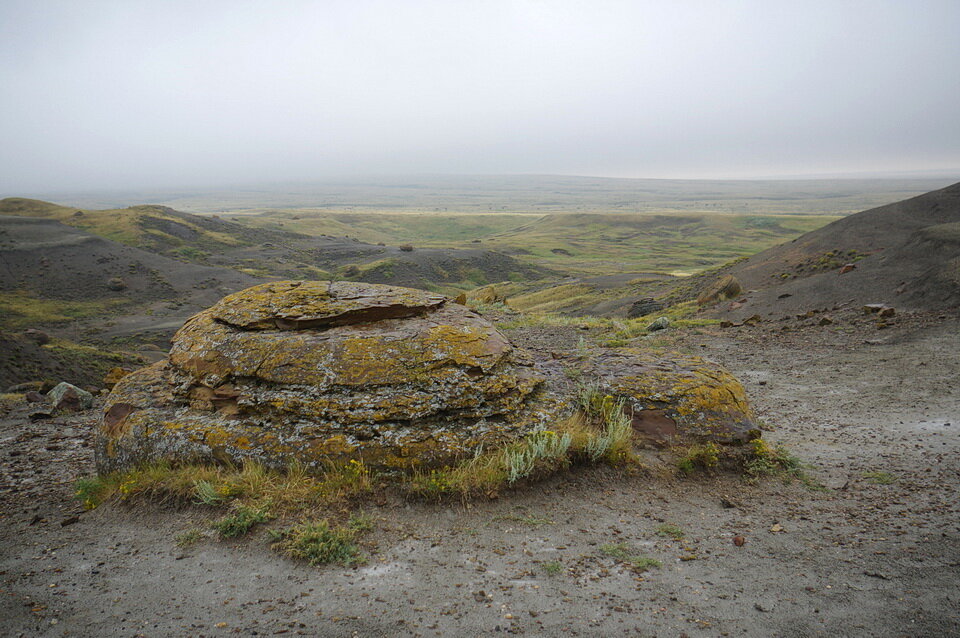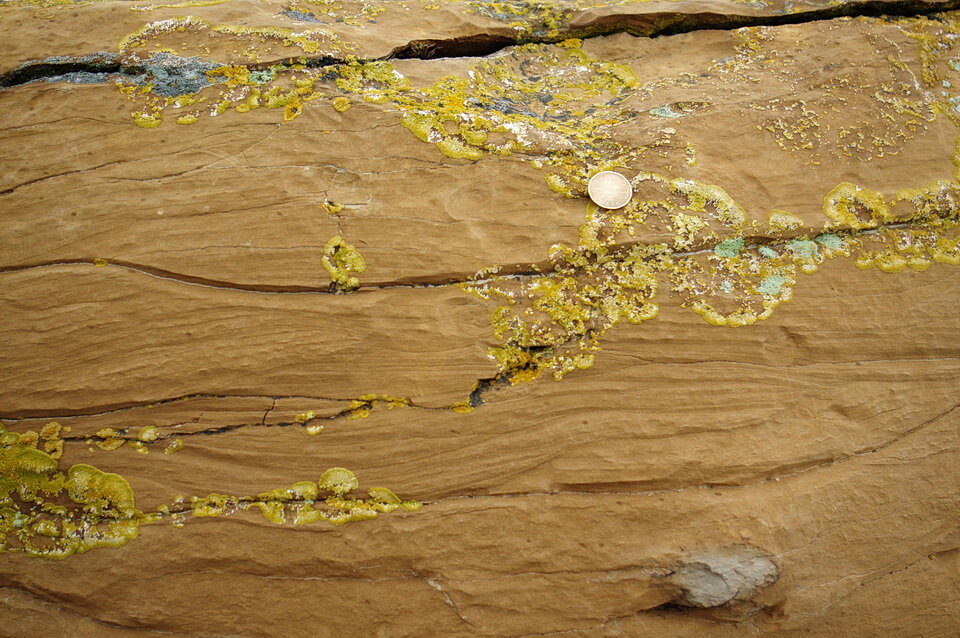Alberta: Large Concretions: Red Rock Coulee, Alberta
Some of the reddish, spherical concretions that dot the surface of the land at the Red Rock Coulee, southern Alberta. The concretions are harder than the host rock shale of the Bearpaw Formation, resist erosion, and are left on the land’s surface after the softer rock was eroded away. Image: Andy Fyon, Aug 12/19.
Dinosaur Eggs? NO!
Well, this is an odd landscape. It is a view over the Red Rock Coulee area, located in a Provincial Natural Area, southeastern Alberta, about 54 kilometres (30 mi) south-southwest of the city of Medicine Hat (Location map). And no, the spherical forms are NOT dinosaur eggs. The latitude and longitude location of the parking lot is: 49 degrees 39 minutes 18.41 seconds North and 110 degrees 51 minutes 45.34 seconds West.
Location map 1: Regional geographic location of the Red Rock Coulee concretion site, Alberta. Image from Google Earth.
Location map 2: Detailed location and illustration of the landscape at the Red Rock Coulee, Alberta, Canada. Image from Google Earth.
Concretions
I suspect your eye is drawn to the large reddish spherical rocks that dot the landscape (Photo 1). No, those large reddish spherical rocks lying on the surface are not dinosaur eggs. The spherical forms are called concretions and they are big. Some measure 2.5 metres (10 ft) in diameter. The concretions are scattered across the surface of the land in the badlands and coulees (valleys), where the softer host sedimentary rocks have been sculpted and eroded by wind and water.
Photo 1: This is a typical example of the reddish concretions exposed at Red Rock Coulee, Alberta. Image by: Andy Fyon, Aug 12, 2019.
The rocks that contain the concretions are about 80 million years old. The rocks consist of shale, sandstone, iron-rich rock, and clay-rich deposits. These rocks were deposited, as sediments, on the bottom and edges of an ancient north-south ocean that divided western Canada from central Canada about 80 million years ago. That ancient sea is called the Western Interior Seaway. Geologists call the rocks the Bearpaw Formation, of Late Cretaceous (Campanian) age.
Concretion Formation
The concretions formed after sediments were deposited. Water from the sediments circulated dissolved minerals and iron. That watery mix deposited a “cement” around bits of shell, bone, and other biological debris in the sediments. The concretions grew outward, in a spherical shape, as more cement layers were deposited successively on top of earlier layers. Because the cement is a little harder than the surrounding rock, the concretions are more resistant to erosion and not only survive the erosion, but are left on the land surface after the softer rock were worn away. Iron minerals give the concretions a reddish colour. Sometimes you can see "growth rings" produced by the layers of cement (Photo 2).
Photo 2: Where the concretion split apart, you can sometimes see "growth rings" produced by the successive deposition of layers of cement. Note the coin (2.5 cm diameter; 1 inch) illustrates the size of the growth rings in this concretion. Photo composed by Andy Fyon, Aug 12/19.
Sometimes you can also see the remains of primary structures within the concretion, such as bedding or cross-bedding (Photo 3).
Photo 3: In this cross-section of a concretion at Red Rock Coulee, there are faint lines and bands visible that resemble cross bedding. Image by Andy Fyon, Aug 12, 2019.
Some people have reported seeing remnants of fossils that were the nucleus for cementation, but I did not see those.
Concretions are not rare and they occur in many areas across Canada.
Have A Question About This Note?
Andy Fyon, April 5, 2020
